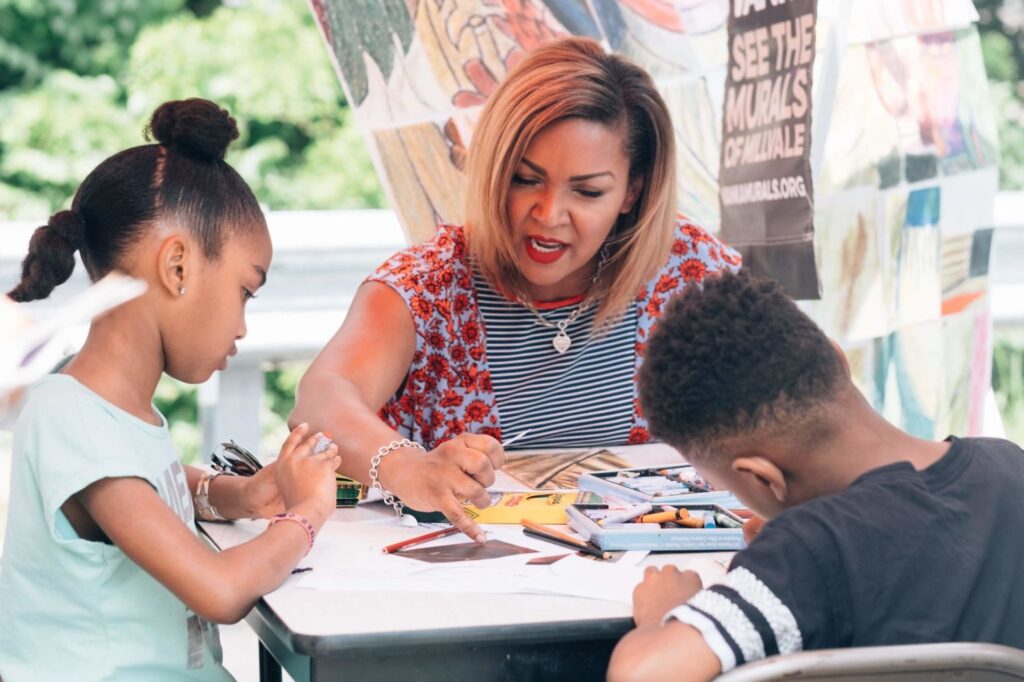In the span of a few short weeks, COVID-19 has transformed our region’s education system: schools closed, out-of-school learning programs suspended, state-wide testing and requirements waived. Home has become every student’s new home-base for learning.
Behind the scenes, teachers and schools have moved quickly to transition to remote learning. That has meant tackling instruction-related issues, like ensuring students have access to computers and wifi, ramping up remote learning platforms, adapting lesson plans for online delivery, and ensuring accessibility for students with disabilities, plus finding ways to continue the host of other services students usually receive when in school, like daily meals and social-emotional supports.
Slowly, schools and families are carving out a new rhythm. This adjustment has been challenging, certainly. But it’s also given us a chance to reassess what’s important and come face-to-face with how education must innovate to ensure learning is engaging, relevant, equitable, and accessible to every student.
Now, local schools and organizations are sharing their COVID-19 experiences with us: what they’re trying, where they’ve succeeded, where they’ve failed, and what they’re learning along the way.
We call these quick case studies promising practices, and our next round features creative partnerships and ideas from four local agencies and schools.
Butler Area School District (BASD)
problem
On top of their massive efforts to feed children during school closures, BASD needed to connect with hundreds of students who either had no internet access or only had access through a data plan and phone.
solution
After conducting a parent survey to gather data, BASD administrators faced one big question: How do they keep families without access informed and engaged, while they worked to increase connectivity and access to devices? For the answer, they turned Butler Radio Network, who agreed to turn over their AM channel to BASD teachers for one hour every weekday morning (30 minutes for elementary and 30 minutes for secondary).
outcome
Thanks to their radio partnership, BASD students can tune in, even if they do not have access to the internet, and stay engaged in learning. Approximately 1,200 students listen to the broadcast live every day—some of the highest ratings the network has ever charted.
Meanwhile, the district has distributed laptops, iPads, and hotspots to students in need. They are also working directly with Armstrong Cable to provide internet service to more than one hundred families.
Intermediate Unit 1 (IU1)
problem
With learning set to stay at home indefinitely, IU1 teachers wanted to help students establish normalcy through continuity of learning.
solution
At the start of school closures, IU1 made quick moves to support both teachers and families. They collected and compiled resources on their Online Resources Site for educators, including virtual PD on STEM/STEAM, mental health, ELA, math, and more. They also recorded sessions and instructional resources to assist educators in continuing education. They developed another site for parents and guardians, to help them find resources and educational tools for learning at home.
These early efforts set the stage for educators and families to support students in the weeks ahead.
outcome
IU1 campus school students rose to the challenge of making at home, continuing the lessons they typically received daily at IU1’s Fab Lab. These lessons connected students to several subject areas like math, ELA, science, and art. In turn, students let their creativity and ingenuity shine in their projects, continually reaching out to teachers to show off their completed work and express their pride and effort. Despite the challenging times, the students, teachers, and administrators of IU1 are embracing dedication, kindness, and creativity to have a daily positive impact on learning.
Western Pennsylvania School for Blind Children (WPSBC)
problem
In addition to launching remote learning, maintaining consistent communication with families, and hosting live virtual meetings with parents, administrators, and the school psychologist, WPSBC wanted to help local healthcare professionals working during the pandemic.
solution
WPSBC partnered with the Make the Masks project, and their Pittsburgh-based coordinator, to use the school’s seven 3D printers to produce much-needed masks for medical workers. The masks have an interchangeable filter that can be replaced, making them safe for multiple uses.
Staff volunteers moved printers into their homes, where they can produce approximately eight masks per day.
outcome
Since early April, WPSBC has printed 50-60 masks per week. They have encouraged other schools and agencies across the region to also make masks, providing those interested with a free instructional file.
Mon Valley School, Allegheny Intermediate Unit 3
problem
As a school that serves students with exceptionalities, Mon Valley needed efficient, effective ways to deliver distance learning.
solution
Teachers turned to a collection of platforms, including Google Suite and Google Classroom, to help with their transition to online. They began building instructional videos using Loom, Camtasia, and a Wacom graphics tablet. They also built assessments using Quizlet, Kahoot (for game-style quizzing), Flipgrid, and Google Forms. Some used the free Classroom Screen tool, which allows educators to use widgets to support class activities and display lesson instructions clearly and visually.
outcome
With tools in hand, some teachers are utilizing the “flipped” classroom concept, which “flips” the common instructional approach: Students use teacher-created videos and interactive lessons to access instruction in advance of class. While in class, they work through problems, advance concepts, and engage in collaborative learning. This format allows educators to maximize time for individual student interaction and supports student engagement with video content (teachers can ask students to prepare questions based on their videos, for example).
